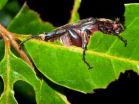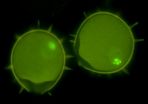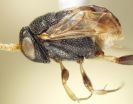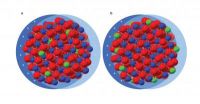(Press-News.org) VANCOUVER, BRITISH COLUMBIA – Women who smoke during pregnancy may be putting their newborns at risk for congenital heart defects, and the more they smoke, the higher the risk, according to a study to be presented Saturday, May 3, at the Pediatric Academic Societies (PAS) annual meeting in Vancouver, British Columbia, Canada.
Cigarette smoking during pregnancy has been linked to many birth defects, such as cleft lips and palates, and missing and deformed limbs. Some studies also suggest maternal smoking may be associated with heart defects.
The authors of this study used birth certificate data and hospital discharge records from Washington state to determine if maternal smoking during the first trimester of pregnancy is linked to heart defects and if so, what types of defects.
"I care for kids with complex congenital heart disease on a daily basis, and I see these kids and their families enduring long hospitalizations and often sustaining serious long-term complications as a result of their disease. Usually, the cause of a heart defect is unknown. I saw this research as an opportunity to study what might be a preventable cause of congenital heart defects," said lead author Patrick M. Sullivan, MD, FAAP, clinical fellow in pediatric cardiology at Seattle Children's Hospital and a master's student in epidemiology at the University of Washington School of Public Health.
Using hospital discharge records, researchers identified 14,128 children born with a variety of heart defects from 1989-2011. They matched these cases to 62,274 children without heart defects born in the same year. Then, they compared the proportion of children with heart defects whose mothers reported smoking during pregnancy to the proportion of children without heart defects whose mothers smoked. Mothers' smoking status, as well as how much they smoked daily, was available from birth certificates.
Results showed that children with heart defects were more likely than those without heart defects to have been born to mothers who smoked, and the risk was highest in the heaviest smokers. In addition, although women 35 years of age and older were less likely to smoke during pregnancy than younger women, older women had a higher risk of having a child with a heart defect if they smoked.
Newborns whose mothers smoked were at about a 50 to 70 percent greater risk for anomalies of the valve and vessels that carry blood to the lungs (pulmonary valve and pulmonary arteries) and about a 20 percent greater risk for holes in the wall separating the two collecting chambers of the heart (atrial septal defects). All of these defects often require invasive procedures to correct.
Researchers also found that in recent years about 10 percent of women giving birth reported smoking during pregnancy. They estimated that maternal smoking during the first trimester may account for 1 to 2 percent of all heart defects.
"Women, particularly younger women, are still smoking while pregnant, despite largely successful public health efforts to reduce smoking in the general public over the past few decades," Dr. Sullivan concluded. "Ongoing cigarette use during pregnancy is a serious problem that increases the risk of many adverse outcomes in newborns. Our research provides strong support for the hypothesis that smoking while pregnant increases the risk of specific heart defects."
INFORMATION:
Dr. Sullivan will present "Risk of Congenital Heart Defects in the Offspring of Mothers Who Smoke Cigarettes During Pregnancy: A Population-Based Case-Control Study of Washington State Birth Certificates and Hospital Discharge Data from 1989-2011" from 8:30-8:45 a.m. Saturday, May 3. To view the study abstract, go to http://www.abstracts2view.com/pas/view.php?nu=PAS14L1_1190.3&terms=.
No outside funding was received for this research.
The Pediatric Academic Societies (PAS) are four individual pediatric organizations that co-sponsor the PAS Annual Meeting – the American Pediatric Society, the Society for Pediatric Research, the Academic Pediatric Association, and the American Academy of Pediatrics. Members of these organizations are pediatricians and other health care providers who are practicing in the research, academic and clinical arenas. The four sponsoring organizations are leaders in the advancement of pediatric research and child advocacy within pediatrics, and all share a common mission of fostering the health and well-being of children worldwide. For more information, visit http://www.pas-meeting.org. Follow news of the PAS meeting on Twitter at http://twitter.com/PedAcadSoc.
Smoking during pregnancy may raise risk for heart defects in babies
Data show risk for congenital anomalies highest among babies born to older women who smoke and heavy smokers
2014-05-03
ELSE PRESS RELEASES FROM THIS DATE:
Study shows lower verbal test score for toddlers who play non-educational games on touch screens
2014-05-03
VANCOUVER, BC --A recent study by pediatricians from the Cohen Children's Medical Center of New York examined infants 0-3 years old that used touch-screen devices to determine if their use was of any educational benefit to infants and toddlers. The study showed that children who played non-educational games using touch-screen devices had lower verbal scores upon testing.
The results also showed that although the majority of parents cited in the study believed their children received educational benefits by using smart phones, readers and tablets, there ...
Nearly 50 percent of M.D.s believe diversion of ADHD stimulant medications among teens is a problem
2014-05-03
VANCOUVER, BC – Two recent studies by investigators at the Cohen Children's Medical Center of New York examined physicians' perceptions and knowledge of diversion of stimulant medications for Attention Deficit Hyperactivity Disorder (ADHD) as well as practices physicians use to prevent diversion among their patients prescribed these medications.
The results showed that while almost half of all physicians surveyed believe diversion is common among teens with ADHD, the majority never received training on the topic. Furthermore, about one-third of physicians rarely counsel ...
UN targets on health risk factors can prevent 37 million deaths by 2025
2014-05-03
Reaching globally-agreed targets for health risks such as smoking and alcohol can prevent more than 37 million deaths by 2025.
A new international study led by Imperial College London has estimated how achieving globally-agreed targets for six important health risks between 2010 and 2025 will reduce deaths caused by the big-four chronic diseases: cancers, diabetes, lung disease and cardiovascular disease (mainly heart disease and stroke).
Published in The Lancet the study finds that achieving the targets can prevent over 37 million deaths from these diseases by 2025. ...
The Lancet: Reducing just 6 risk factors could prevent 37 million deaths from chronic diseases over 15 years
2014-05-03
Reducing or curbing just six modifiable risk factors—tobacco use, harmful alcohol use, salt intake, high blood pressure and blood sugar, and obesity—to globally-agreed target levels could prevent more than 37 million premature deaths over 15 years, from the four main non-communicable diseases (NCDs; cardiovascular diseases, chronic respiratory disease, cancers, and diabetes) according to new research published in The Lancet.
Worryingly, the findings indicate that not reaching these targets would result in 38.8 million deaths in 2025 from the four main NCDs, 10.5 million ...
Leaf chewing links insect diversity in modern and ancient forests
2014-05-03
Observations of insects and their feeding marks on leaves in modern forests confirm indications from fossil leaf deposits that the diversity of chewing damage relates directly to diversity of the insect population that created it, according to an international team of researchers.
"The direct link between richness of leaf-chewing insects and their feeding damage across host plants in two tropical forests validates the underlying assumptions of many paleobiological studies that rely on damage-type richness as a means to infer changes in relative herbivore richness through ...
Salk scientists reveal circuitry of fundamental motor circuit
2014-05-02
LA JOLLA—Scientists at the Salk Institute have discovered the developmental source for a key type of neuron that allows animals to walk, a finding that could help pave the way for new therapies for spinal cord injuries or other motor impairments related to disease.
The spinal cord contains a network of neurons that are able to operate largely in an autonomous manner, thus allowing animals to carry out simple rhythmic walking movements with minimal attention—giving us the ability, for example, to walk while talking on the phone. These circuits control properties such as ...
Which came first, bi- or tricellular pollen? New research updates a classic debate
2014-05-02
With the bursting of spring, pollen is in the air. Most of the pollen that is likely tickling your nose and making your eyes water is being dispersed in a sexually immature state consisting of only two cells (a body cell and a reproductive cell) and is not yet fertile. While the majority of angiosperm species disperse their pollen in this early, bicellular, stage of sexual maturity, about 30% of flowering plants disperse their pollen in a more mature fertile stage, consisting of three cells (a body and two sperm cells). And then there are plants that do both.
So which ...
Researchers find unique fore wing folding among Sub-Saharan African Ensign wasps
2014-05-02
Researchers discovered several possibly threatened new species of ensign wasps from Sub-Saharan Africa -- the first known insects to exhibit transverse folding of the fore wing. The scientists made this discovery, in part, using a technique they developed that provides broadly accessible anatomy descriptions.
"Ensign wasps are predators of cockroach eggs, and the transverse folding exhibited by these species may enable them to protect their wings while developing inside the cramped environment of cockroach egg cases," said Andy Deans, associate professor of entomology, ...
Probing dopant distribution
2014-05-02
The icing on the cake for semiconductor nanocrystals that provide a non-damped optoelectronic effect may exist as a layer of tin that segregates near the surface.
One method of altering the electrical properties of a semiconductor is by introducing impurities called dopants. A team led by Delia Milliron, a chemist at Berkeley Lab's Molecular Foundry, a U.S Department of Energy (DOE) national nanoscience center, has demonstrated that equally important as the amount of dopant is how the dopant is distributed on the surface and throughout the material. This opens the door ...
Drinking poses greater risk for advanced liver disease in HIV/hep C patients
2014-05-02
PHILADELPHIA—Consumption of alcohol has long been associated with an increased risk of advanced liver fibrosis, but a new study published online in Clinical Infectious Diseases from researchers at Penn Medicine and other institutions shows that association is drastically heightened in people co-infected with both HIV and chronic hepatitis C virus (HCV) infection. Even light ("nonhazardous") drinking—which typically poses a relatively low risk for uninfected persons—was linked to an increased risk of liver fibrosis in the co-infected group.
Reasons for this are not fully ...
LAST 30 PRESS RELEASES:
Fat tissue around the heart may contribute to greater heart injury after a heart attack
Jeonbuk National University researcher proposes a proposing a two-stage decision-making framework of lithium governance in Latin America
Chromatin accessibility maps reveal how stem cells drive myelodysplastic progression
Cartilaginous cells regulate growth and blood vessel formation in bones
Plant hormone allows lifelong control of proteins in living animal for first time
Swedish freshwater bacteria give new insights into bacterial evolution
Global measures consistently underestimate food insecurity; one in five who suffer from hunger may go uncounted
Hidden patterns of isolation and segregation found in all American cities
FDA drug trials exclude a widening slice of Americans
Sea reptile’s tooth shows that mosasaurs could live in freshwater
Pure bred: New stem cell medium only has canine components
Largest study of its kind highlights benefits – and risks – of plant-based diets in children
Synergistic effects of single-crystal HfB2 nanorods: Simultaneous enhancement of mechanical properties and ablation resistance
Mysterious X-ray variability of the strongly magnetized neutron star NGC 7793 P13
The key to increasing patients’ advance care medical planning may be automatic patient outreach
Palaeontology: Ancient tooth suggests ocean predator could hunt in rivers
Polar bears may be adapting to survive warmer climates, says study
Canadian wildfire smoke worsened pediatric asthma in US Northeast: UVM study
New UBCO research challenges traditional teen suicide prevention models
Diversity language in US medical research agency grants declined 25% since 2024
Concern over growing use of AI chatbots to stave off loneliness
Biomedical authors often call a reference “recent” — even when it is decades old, analysis shows
The Lancet: New single dose oral treatment for gonorrhoea effectively combats drug-resistant infections, trial finds
Proton therapy shows survival benefit in Phase III trial for patients with head and neck cancers
Blood test reveals prognosis after cardiac arrest
UBCO study finds microdosing can temporarily improve mood, creativity
An ECOG-ACRIN imaging study solves a long-standing gap in metastatic breast cancer research and care: accurately measuring treatment response in patients with bone metastases
Cleveland Clinic presents final results of phase 1 clinical trial of preventive breast cancer vaccine study
Nationally renowned anesthesiology physician-scientist and clinical operations leader David Mintz, MD, PhD, named Chair of the Department of Anesthesiology at the UM School of Medicine
Clean water access improves child health in Mozambique, study shows
[Press-News.org] Smoking during pregnancy may raise risk for heart defects in babiesData show risk for congenital anomalies highest among babies born to older women who smoke and heavy smokers




